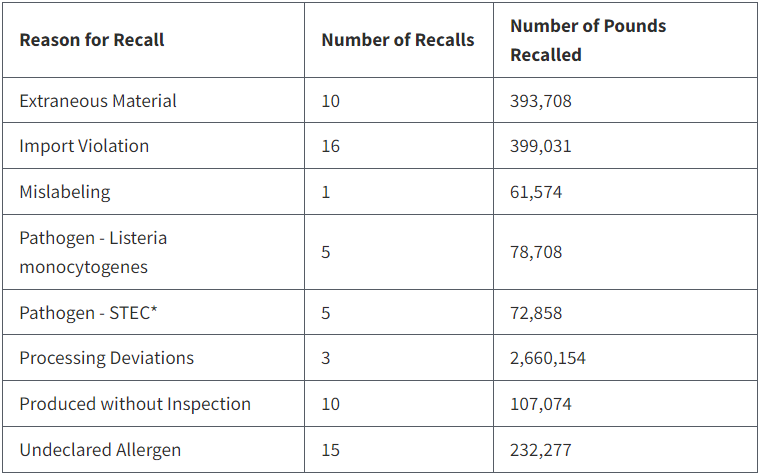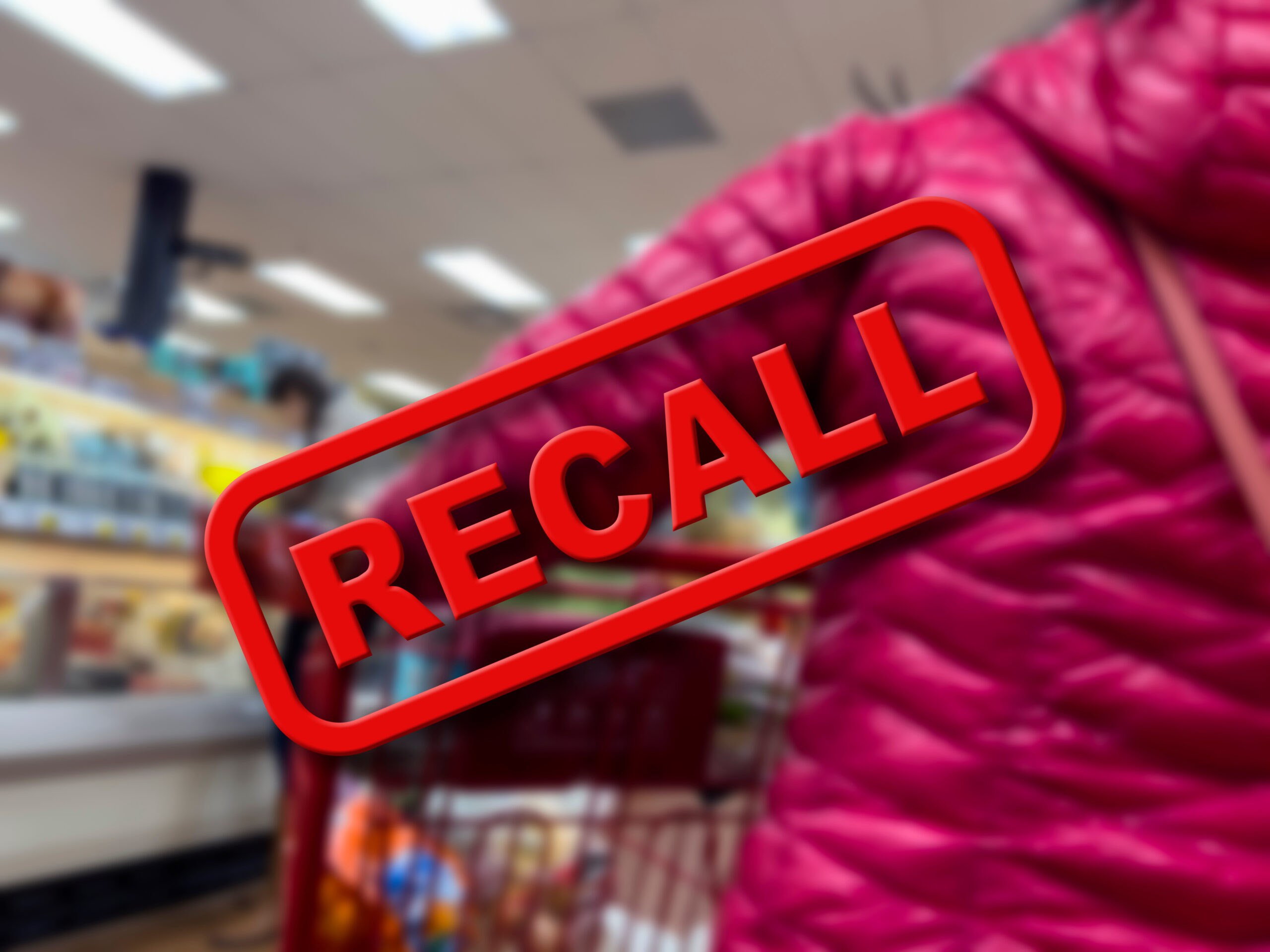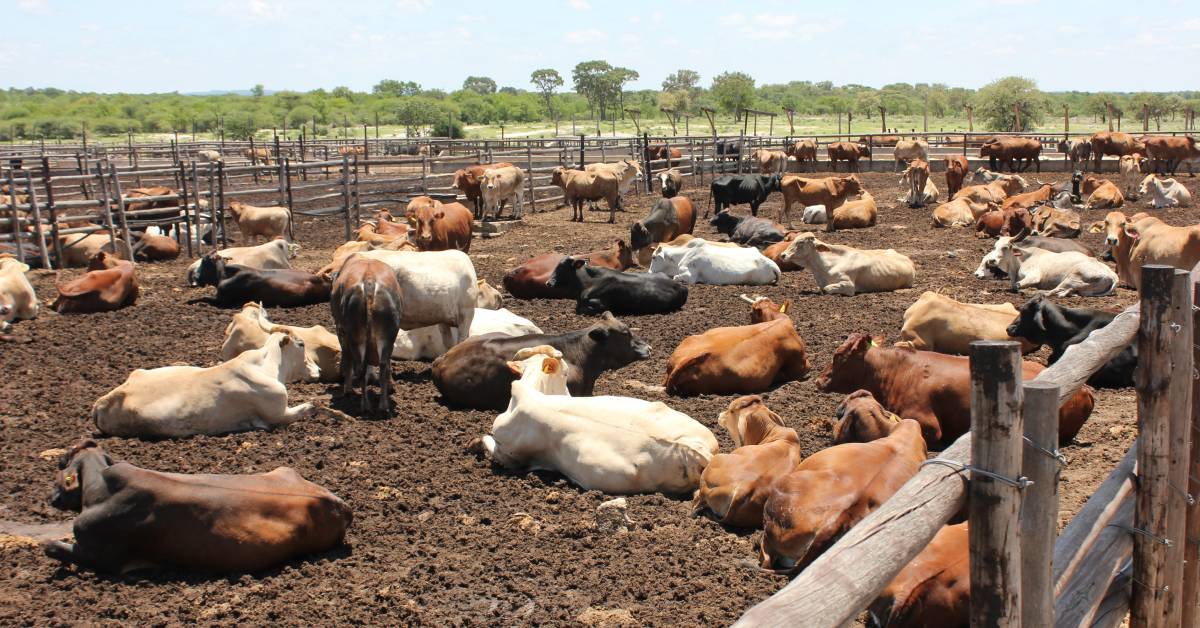Every now and then, we hear news of a food product being recalled from the market. We recently heard the news of a boxed chocolate recall by Abdallah Candies, a Minnesota-based company. The company has recalled its 8-ounce boxes of Sea Salt Almond Alligators. The concern? The candies were labeled as chocolate-covered cherries. They did not mention the presence of almonds, which can trigger severe allergic reactions.
Similarly, in December 2023, the Quaker Oats Company, owned by PepsiCo, recalled granola bars and cereals sold across the U.S. market due to potential Salmonella contamination. This bacteria can cause serious illness with symptoms like fever, vomiting, and diarrhea.
The recall initially targeted specific Quaker products but was expanded in January 2025 to include additional cereals, such as Quaker Chewy and Cap’n Crunch bars. Recently, we heard that the Quaker Oats plant responsible for the contamination would be shutting down permanently.
Food recalls have become more common due to increased awareness and regulations. But what exactly is a food recall? How can companies implement effective food recall management and proactively prevent such situations? Let’s read the blog to find out.
Understanding the Triggers of Food Recalls
The data provided by WHO reveals that 600 million people are affected by foodborne diseases each year, and around 7.5% of all deaths are due to foodborne diseases. Unfortunately, these figures only represent the reported cases, and the actual numbers are expected to be higher.
These statistics highlight how important it is for food businesses to maintain strict food safety standards and implement proper food recall management procedures in case their products are recalled.
What is a Food Recall?
A food recall is a process where a food manufacturing business removes its product from the market when it is likely to be unsafe for consumption. In some cases, the company itself takes action against food recalls. In other cases, government regulatory agencies like the Food and Drug Administration (FDA) or USDA can request or mandate a food recall.
It is essential for the business to take timely action for food recall management if any safety issues or defects are discovered in a product that has already been released in the market.
Failure to take prompt action can put consumer health at risk and potentially harm the business’s image. It can lead to consumers losing trust in the business’s products, and in severe cases, legal action could be taken against the company.
Reasons for Food Recall
Recovering from a food recall by applying effective food recall management procedures can sometimes be very costly for food manufacturing businesses. Hence, to avoid getting involved in such situations, a food producer and seller need to understand the common reasons that lead to food recalls.
As per the report released by USDA, the following were the reasons for food recall reported in 2023:

Let’s look in detail at the top 3 reasons that led to food recall in 2023:
1) Import Violation
Products imported from other countries have to go through proper testing and inspection processes before they are allowed to enter the U.S. market. In many cases, products fail these inspections due to discrepancies in labeling or lack of proper documentation. These discrepancies include incorrect ingredient lists, missing allergen warnings, and others.
Additionally, if the imported goods lack the necessary quality certifications or fail to meet the U.S. food safety standards, they are at risk of being recalled.
- Example of Food Recall Due to Import Violation:
In February 2023, Delight Foods USA LLC, a distributor located in New Jersey and California, recalled nearly 3000 pounds of frozen catfish steaks from India.
The USDA’s Food Safety and Inspection Service reported the reason for the recall as an import violation. India is not authorized to export catfish to the United States, and the catfish lacked proper establishment numbers and USDA inspection marks.
2) Undeclared Allergen
Many consumers are seriously concerned about food allergies, and companies must ensure that their products accurately list all ingredients and allergens to avoid potential health risks. Failure to declare an allergen can lead to severe allergic reactions or even death in some cases.
Common food allergens include milk, eggs, peanuts, tree nuts, wheat, soy, fish, and shellfish.
- Example of Food Recall Due to Undeclared Allergen:
In September 2023, Green Valley Foods, N.D. establishment, recalled around 4000 pounds of frozen meat pizza products due to misbranding and undeclared allergens. The product contained soy, a known allergen that was not declared on the product label.
3) Extraneous Material
Food recall due to extraneous material occurs when a foreign object is found in the food product. The object can enter the food chain at any point, from the field to processing and packaging. Foreign objects can be any extraneous material that is found in the food while not being intended as an ingredient.
These materials can be plastic, metal, glass, wood, or even part of the food itself, like bone, shell, pits, and stem.
- Example of Food Recall Due to Extraneous Material:
In August 2023, Nestle USA recalled specific batches of their Toll House Cookie Dough bars due to the presence of possible wood fragments. This voluntary recall only affected bars produced in April 2023. The action was taken after a small number of consumers reached out to Nestle with this issue.
Nestle was able to take the product off the market by working with the FDA. It also advised consumers not to eat the bars and return them for a refund.
Food Recall Classifications
Food recalls are classified based on how serious they are and the level of potential health risk they pose to consumers. There are three classifications of food recall that U.S. regulatory agencies, FDA and FSIS, follow:
Class I – High or Medium Risk:
A product recall is classified as a high or medium risk recall when there is a strong chance that consumption of such product will lead to severe health problems or even death.
Examples include food products that may contain dangerous bacteria, such as E.coli or Salmonella, or undeclared allergens that can trigger anaphylaxis in allergic individuals.
Class II – Low Risk:
Low-risk product recalls are usually the ones that may cause temporary adverse health conditions that can be treated. However, eating this type of food is unlikely to cause serious health consequences.
Examples include products that may contain specific coloring agents or excessive/undeclared sulfites.
Class III – Marginal Risk
This type of recall involves the use of a violative product that won’t cause any health consequences. Although the product doesn’t fulfill the regulatory standards, eating it won’t harm consumers.
Examples include products that are produced without proper inspection or lack the required labeling information, such as missing ingredient lists (undeclared ingredients that are not allergens).
The Process of Food Recalls
Effective food recall management requires a comprehensive, well-documented process that outlines the responsibilities and actions to be taken in case of a recall.
This process typically involves the following stages:
Stage 1: Problem Identification
The first step in food recall management involves identifying issues that could potentially harm consumers or violate regulatory standards. It could be identified from customer complaints, internal quality checks, or notices from regulatory bodies.
At this stage, the company needs to take prompt action in order to assess the severity of the possible recall.
Stage 2: Preliminary Investigation
Once a potential issue is identified, a preliminary investigation is conducted. This investigation measures the problem’s validity and potential impact. It involves analyzing production records, testing samples, and assessing whether the issue is isolated or widespread.
The findings from this investigation will inform the decision-making process regarding a recall.
Stage 3: Recall Deliberations
Based on the information gathered during the preliminary investigation, stakeholders, including company executives, quality assurance teams, and legal advisors, sit together to decide if a recall is necessary.
This decision is made considering consumer safety, regulatory compliance, and potential impact on the company’s image and finances.
Stage 4: Notifications & Actions
If a recall is necessary, the company must promptly notify the relevant regulatory authorities, such as the FDA or USDA, and initiate the recall process.
This involves outlining the scope of the recall, identifying the distribution of the affected products, and communicating with consumers, retailers, and other stakeholders to promptly remove the products from the market.
Stage 5: Recall Closure
The recall process ends once the affected products are successfully retrieved or corrected and regulatory authorities are satisfied that the recalled product is no longer a risk to public health.
The company must then submit a final report to the regulatory agencies detailing the recall execution and any measures taken to prevent future occurrences.
Effective Food Recall Management Strategies
In 2020, the US FDA launched an initiative called the “New Era of Smarter Food Safety Blueprint.” The main goal of this blueprint was to create a safer food system that protects public health and uses modern technologies.
The program encourages food businesses to use digital tools such as blockchain technology and predictive analytics to track and trace food products throughout the supply chain and quickly identify potential issues that may lead to recalls.
Businesses have now started to adopt these technologies to improve their food recall management processes, such as:
- Real-Time Tracking and Tracing: Blockchain technology allows businesses to track their products at every stage of the supply chain management, making it easier to identify and isolate potentially contaminated or violated products.
- Predictive Analytics for Risk Assessment: Businesses can use predictive analytics to identify patterns and potential risks that could lead to recalls by analyzing data from various sources. It allows them to take proactive measures like targeted inspections or adjustments to production processes before problems arise.
- Real-time Data Sharing & Alerts: Digital platforms enable businesses to share recall information with retailers and consumers in real-time, enabling them to quickly remove the affected products from circulation.
- Recall Management Software: Companies can also use dedicated recall management software to streamline the entire process, from identifying the issue to handling communication and reporting.
By incorporating these technologies and strategies into their food recall management processes, businesses can improve their response time, reduce recall costs, and protect consumer health.
How Folio3 FoodTech Can Help Businesses in Food Recall Management
While food recall management is essential to protect public health, it can be time-consuming and costly for businesses. At Folio3, we offer tech-driven solutions that can help companies manage their food production processes and minimize the risk of recalls by enhancing traceability. Our solutions include:
- Food Safety Management Software:
Folio3 FoodTech’s food safety software automates food safety processes, covering hazard analysis, HACCP plans, product testing, and quality assurance. It guarantees product safety and regulatory compliance, helping businesses prevent issues that could result in recalls.
- Food Traceability Software:
Our product recall management software minimizes recalls by detecting quality deviations in production and packaging processes before products hit the market. The solution digitizes the process and ensures real-time traceability.
Even in the event of a recall, with food traceability systems, you would have all the relevant data, such as support documents, allowing you to track your food products at every stage and easily produce a traceability report.
Traceability Software that Folio3 Built for a Leading Meat Producer
A leading meat producer in the U.S. wanted to digitize its record-keeping process and manage traceability from farm to table. For this, it approached Folio3 FoodTech for a solution that would help the company achieve total traceability and ensure product quality throughout its operations.
After carefully analyzing the client’s requirements, Folio3 FoodTech designed a custom-built traceability software solution to manage traceability and help the company know exactly what was happening in the field.
The solution consisted of a web application with advanced features such as auto-assignment, RFID monitoring, and detailed reporting and analytics.
Using our software allowed the company to gain total visibility at every step of the process. The software enabled Agribeef to take a proactive approach to food recall management and minimize the risk of recalls by ensuring quality and safety from ranch to table. It not only helped them maintain their reputation but also reduced costs associated with recalls.
Conclusion
As the world becomes increasingly reliant on technology, the food production industry is no exception. Companies in this sector are constantly looking for ways to improve their processes, reduce costs, and, at the same time, fulfill all food safety standards.
At Folio3 AgTech, we understand the challenges businesses face in food recall management and offer innovative solutions to help them comply with regulatory standards and maintain consumer trust.
So, suppose you are in the food production and supply business and are not using software for food safety or recall management. In that case, consider integrating technology into your operations to minimize the risk of food recall and stay ahead of the other players in the market.
FAQs
How Do You Manage a Food Recall?
If your company has recalled its food products, the best approach to managing the recall is to implement a traceability system to identify the affected products in the market and their movement throughout the supply chain.
How Should You Handle Food That Has Been Recalled?
Once you know that a particular food has been recalled, you should immediately isolate the product from other products and safely dispose of it by following the guidelines announced publicly by the company that recalled it.
What are the Four Guidelines to Follow When Food is Recalled?
- Identify and isolate affected products.
- Communicate the recall to relevant parties, including suppliers and consumers.
- Dispose of recalled products safely according to recommended guidelines.
- Implement measures to prevent similar recalls in the future, such as improving traceability systems and conducting regular audits.







